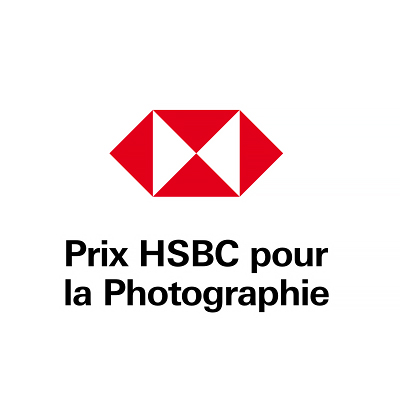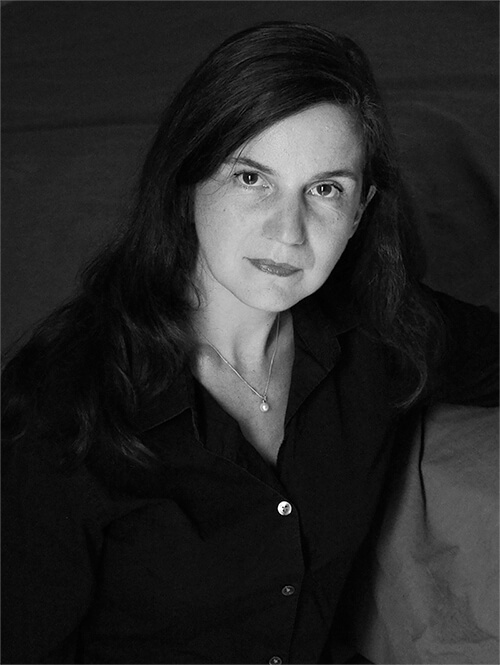Sylvie Hugues, Artistic advisor, proposed 12 photographers to the members of the Executive Committee and comments her choices:
"After nearly two centuries of existence, photography still carries its original ontological ambiguity, a duality that makes it both a highly refined technique and a commonplace practice: a clearly identified profession and an acknowledged art form. In 2021, more than ever, the inter-mingling of artists, uses, viewpoints and skills, is reflected in the Prix HSBC."
The Executive Committee chose:
Aassmaa Akhannouch
Moroccan, born in 1973.
Lives and works between Casablanca and the Lot area of Occitanie.
After earning an engineering degree in France and an MBA in the United States, I worked in marketing for 15 years.
In 2013, I took courses at Photo Academy Casablanca to further my photography skills.
In 2016, I decided to devote myself entirely to the practice of photography.
From 2016 to 2018, I was accompanied in my quest by the photographic artist FLORE at the Atelier Photographique de L'Oeil de l'Esprit in Paris.
My photography is an exploration of memory. Through my images and careful attention to the printing process, I tell stories, fragments of memories open to the viewer's associations and emotions. Rather than an intention to document the past, I attempt to reveal the emotions that dwell in me.
What I try to extract from the past is an impression, intimate, lyrical and timeless.
I have exhibited in Morocco and France and am represented by Galerie127, Marrakesh, Morocco.
Aassmaa Akhannouch's Website
Aassmaa Akhannouch' on Instagram
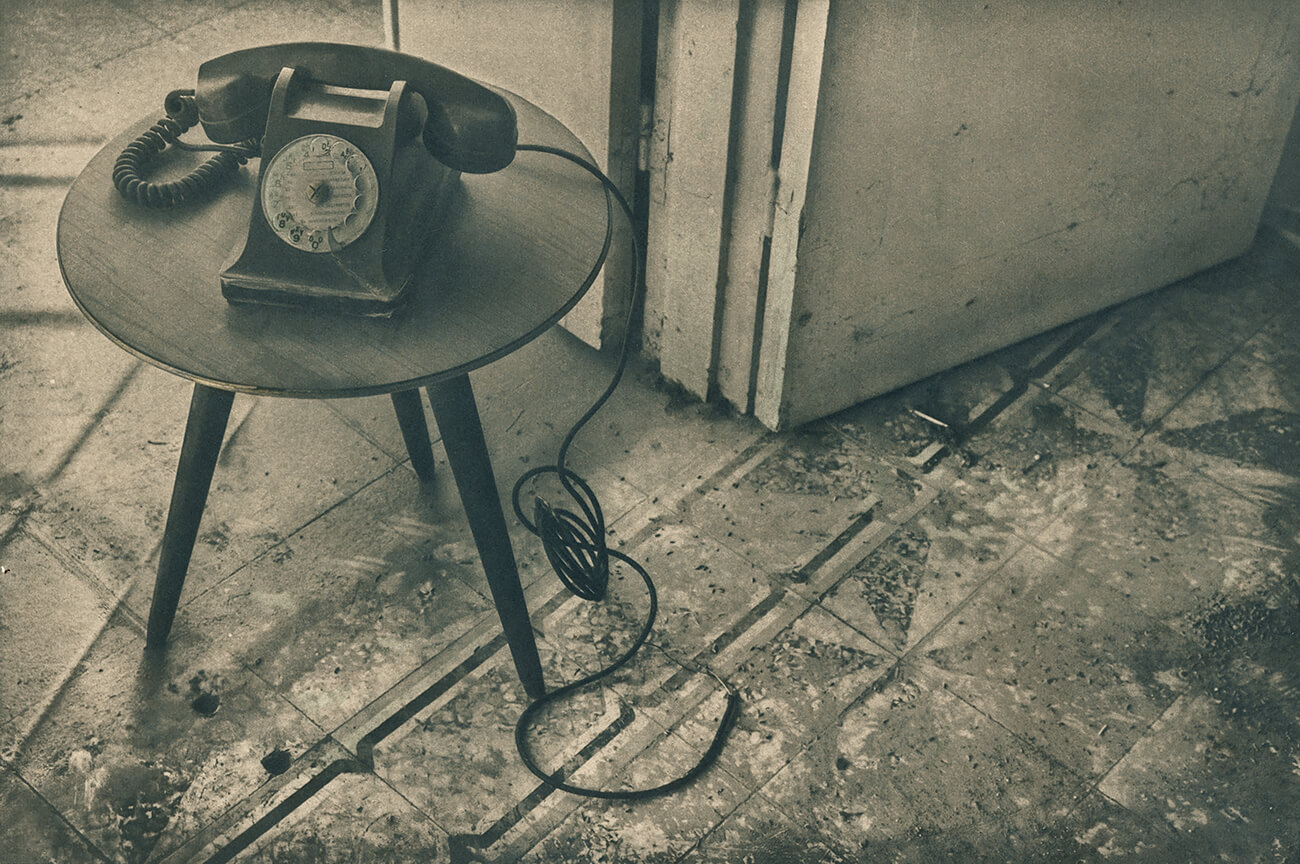
Le 237884 ne snnera plus © Aassmaa Akhannouch
Both my parents have passed away now.
As a child, I lived in a red house. My address was "the red house", a place my mother adored.
It had been closed up for 30 years, but its sale was imminent, so my sister and I went to clear it out.
The house still had some furniture, three plum trees, four orange trees and my entire childhood.
I strolled through the garden, which was not as big as I remembered... Tomorrow is a holiday, we will probably eat chicken with olives... My mother is baking "corne de gazelle" biscuits in the courtyard outside the kitchen... It is summer and the huge window in the lounge is wide open.
I approach it and see my father and sister peering at a book. There are books everywhere, but at night, no one read me children's stories, they told me stories, because a long time ago, the most extraordinary things could still happen... Tomorrow is a holiday. I will have a ribbon in my plait, I will not play too much in the morning to avoid ruining my shoes, but by the afternoon I will have forgotten they were new... I will watch my mother fix her hair in front of her mirror, perhaps she will wear her pale blue caftan... I do not want this house to be sold, I want to preserve it on the eve of a holiday, in that eternal summer, enveloped, asleep, because it has never stopped being my address.
The images in the series are shots of my childhood home, but also set pieces that evoke my childhood in that house... The prints are cyanotypes toned and enhanced with watercolour, all the work is done by myself.
- Aassmaa Akhannouch
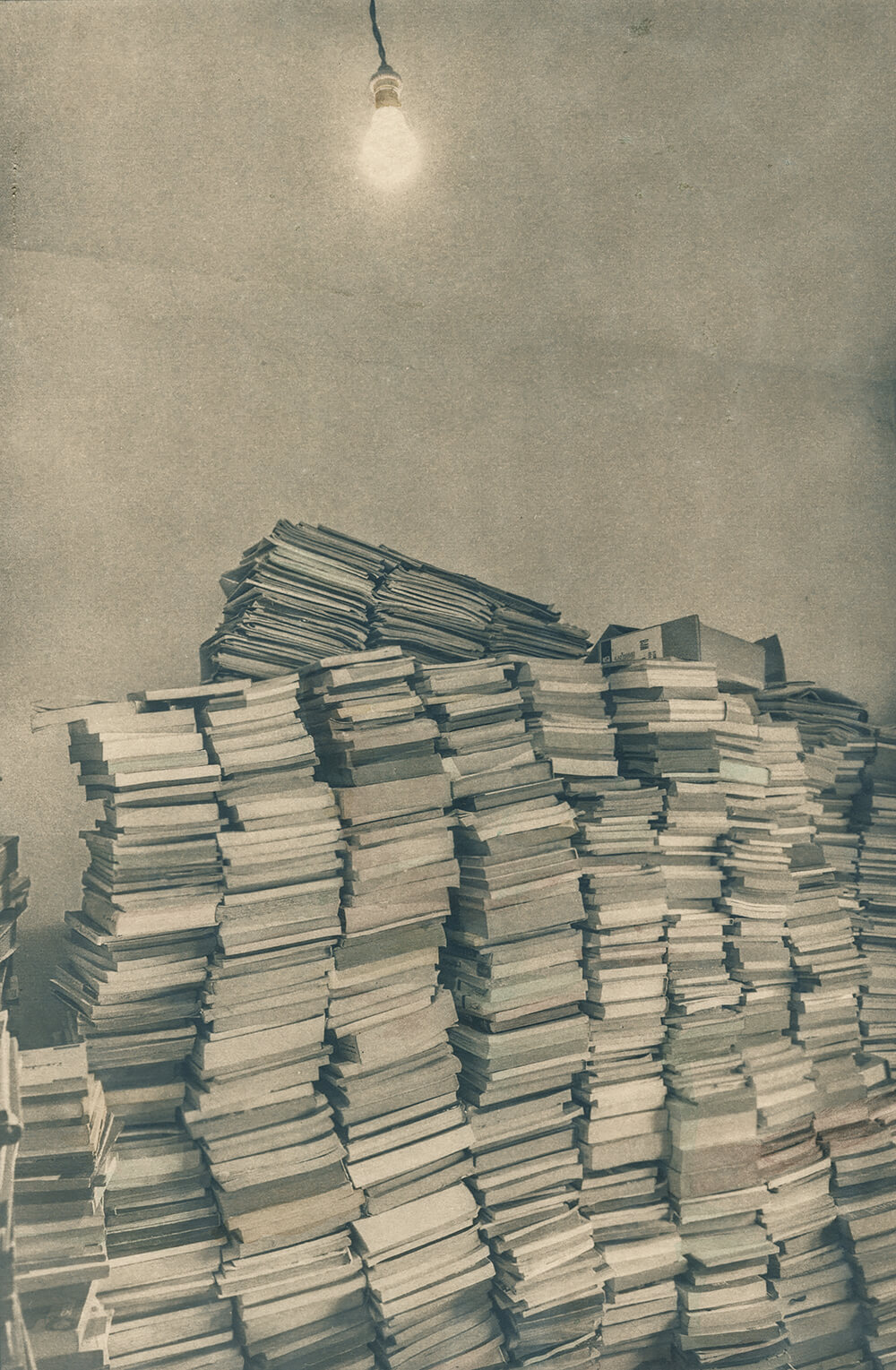
Aurais je le temps © Aassmaa Akhannouch
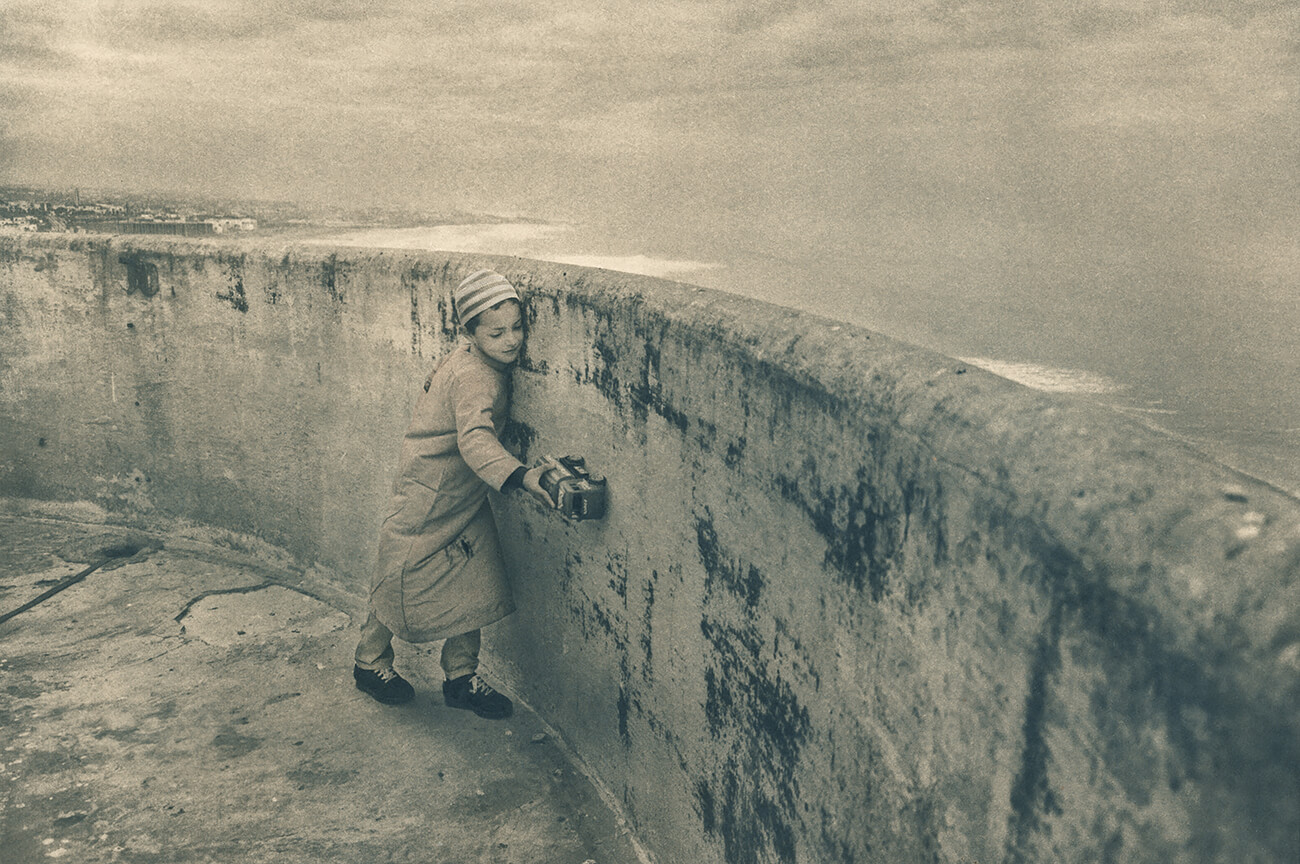
Ete eternel © Aassmaa Akhannouch
What is the colour of memory? When her childhood home was being sold, Moroccan photographer Aassmaa Akhannouch returned to it, taking us on a journey through time. She cleverly immortalised the old television set (definitively beyond repair), the pile of books that will never know another reader, the longforgotten dress hanging in the closet... They project a great melancholy. But the photographer does not give in to the facile temptations of such an exercise.
How many times have we seen family homes photographed from every possible angle? Closed shutters, cracked walls, deserted beds and so on. The photographer builds on the nostalgia of the empty spaces with images describing scenes from her childhood: meal preparation, hair styling sessions... And, through the miracle of her talent, the tone is just right.
It is as if the inhabitants of this house - though it has been closed up for 30 years - had never left it.
The printing process she mentions, namely cyanotype toned and enhanced with watercolour, aligns perfectly with the message and gives the prints a patina. The effect is a bit like opening an old trunk in the attic and finding a collection of photos. A return trip between past and present, where we find ourselves in the presence of an eternal Morocco whose faded, but tenacious colours reveal a beautiful sensitivity.
- Sylvie Hugues 2021 Artistic advisor

Salon Télé © Aassmaa Akhannouch
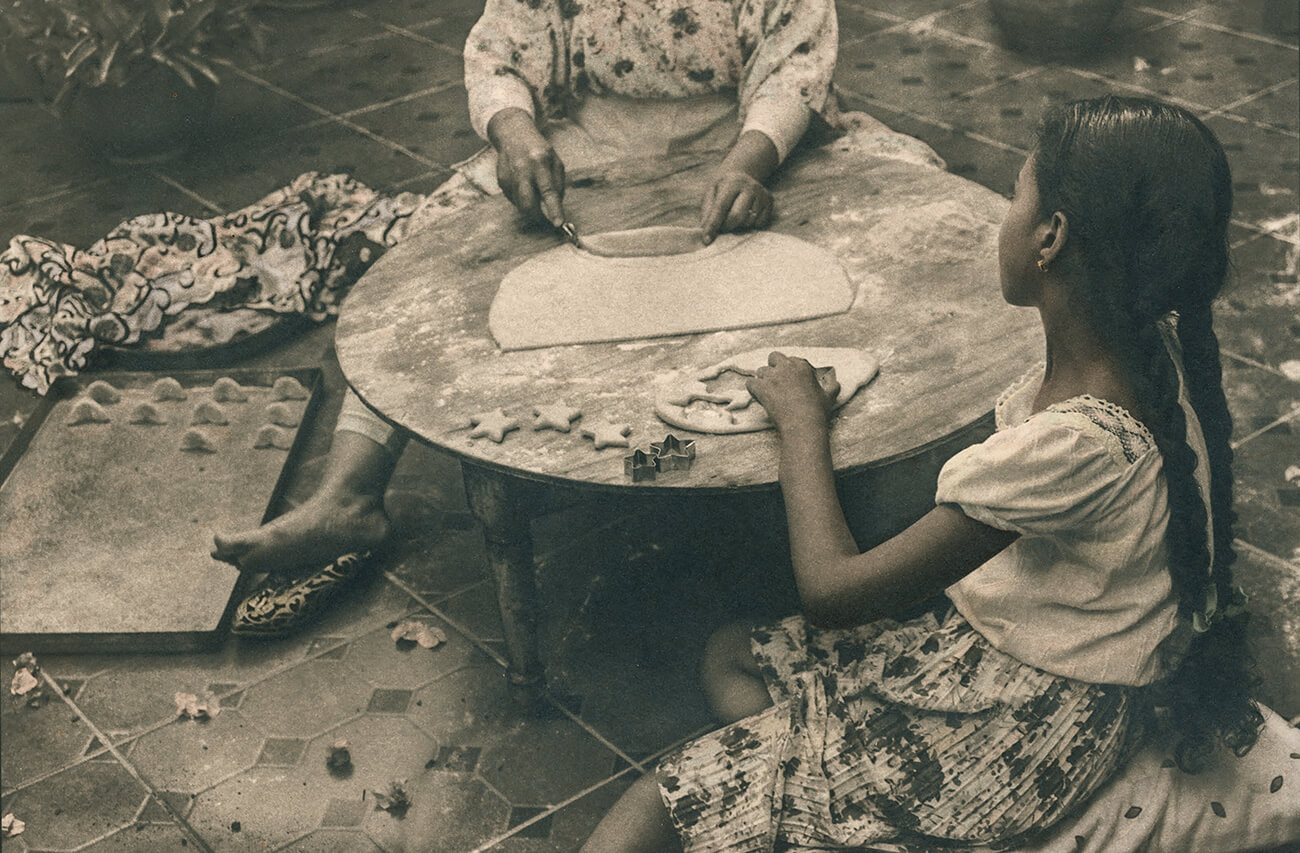
Veille de fête © Aassmaa Akhannouch
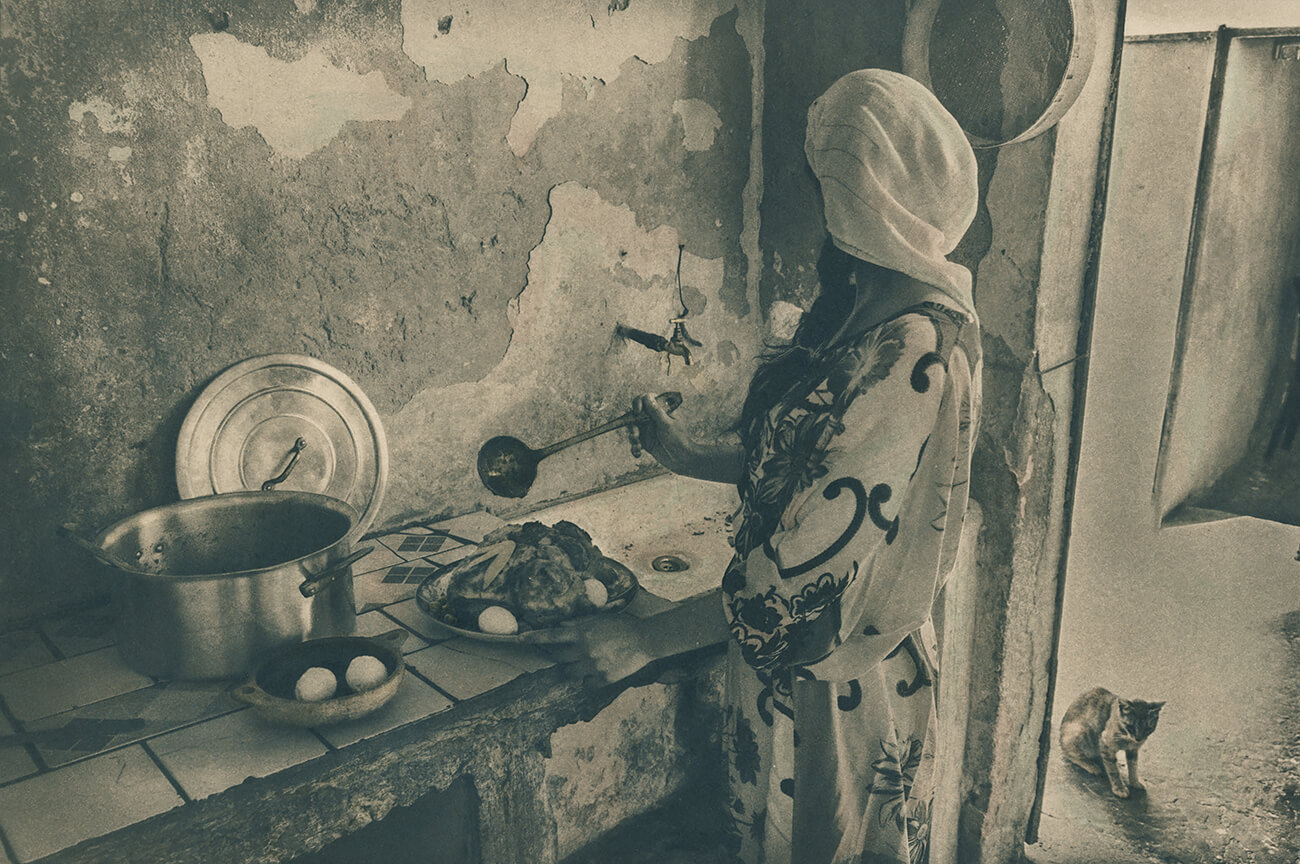
Repas de fête © Aassmaa Akhannouch
French, born in 1977.
Lives and works in Paris.
A photographer and architect by training, his work focuses first on the city, its appearance, its evolution, its traces, its empty spaces...and on their resulting human behaviours.
In 2006, his first work on Chinese cities was exhibited at the Rencontres d'Arles under the artistic direction of Raymond Depardon. He joined the Picturetank cooperative agency in 2007 and remained a member until it was shuttered in 2017.
In 2010, he showed "Voyage en Périphérie" with the France14 group to shine a light on the mass housing landscapes of Île-de-France.
In 2011, his work began to take an interest in the role of plants in the urban landscape and he also turned to rural landscapes. This led to "Le voyage d'Alberstein", a collaboration that attempted to blend different lines of questioning about humans, the temporal framework in which they live, and their natural, planned and relational environments.
He is currently working with a 4x5 camera which enables him to cast a slower gaze on urban changes in Asia and in France, with a more synthetic style that combines drawing, engraving and photography. His work has been exhibited in France and abroad.
Cyrus Cornut's Website
Cyrus Cornut on Instagram
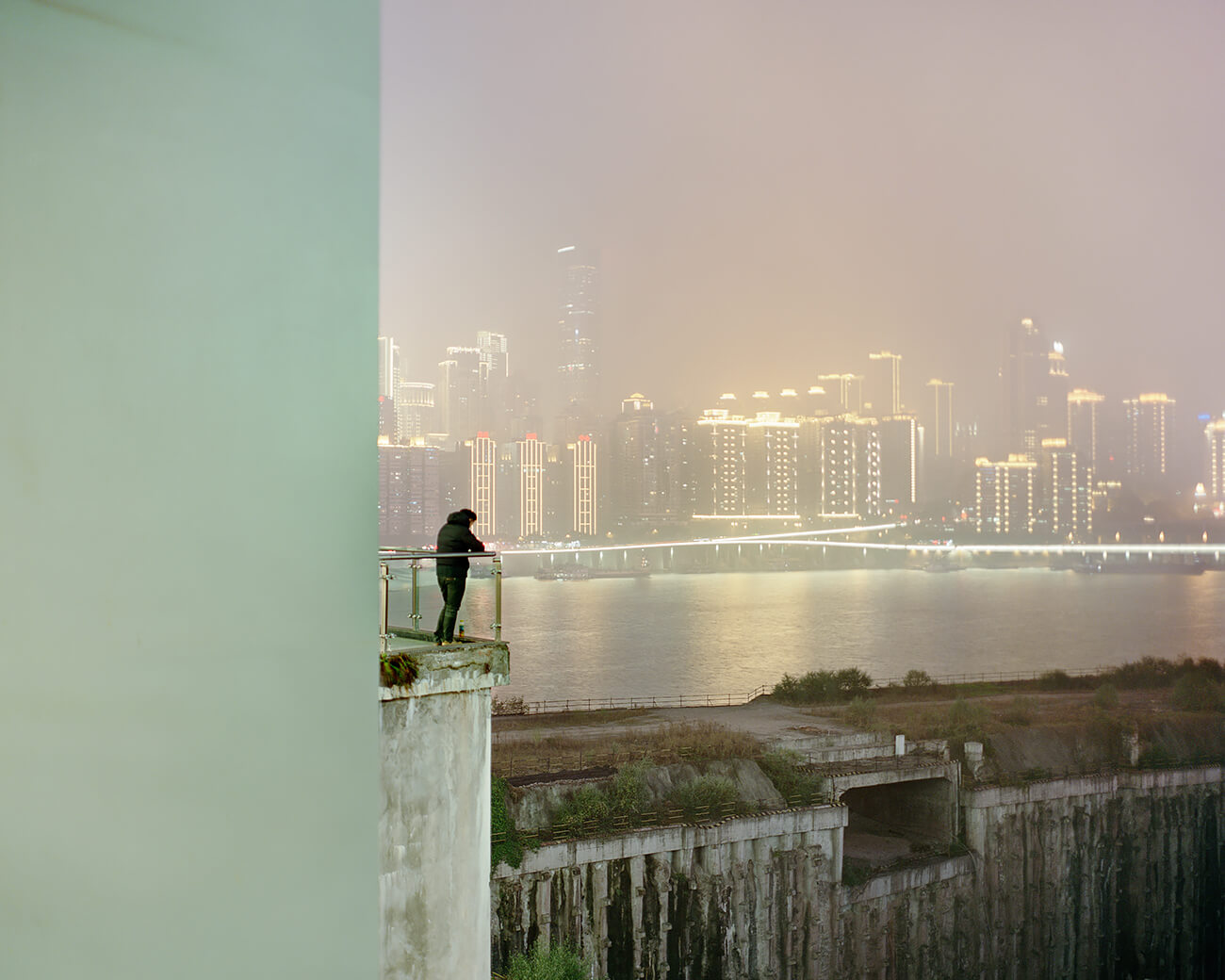
Chongqing 2017 © Cyrus Cornut
Chongqing municipality, People's Republic of China, population of 34 million.
One of the world's highest demographic and economic growth rates.
The central urban area of 15 million people is injected with nearly 300,000 newcomers every year.
Chongqing, the "Mountain City" at the confluence of the Yangtze and Jialing Rivers, struggles to break through the fog that blankets it all year long.
Heir to those displaced from the Three Gorges dam and daughter to the Beijing authorities – who upgraded her to a municipality, raising her up to the same heights as her big sisters on the East coast – Chongqing has developed at a dizzying speed. Urban forms and infrastructure have sprung up, defying gravity and embracing the shorelines of its four banks, each of them steeply carved out by the current of the water. The speed of urbanisation has overtaken the slow rhythm of the fishermen, the erosion of the rivers, the powerful hatching of the mountains.
The uninterrupted dance of the cranes and the excavators stack people ever higher at an unsettling speed. No obstacle remains to stop the skyscrapers from surging upward. They reproduce almost identically, as if in metastasis. Transport networks cross the water, pierce through the rock, and climb the hills, mocking the power of the elements. The river has become the artery that drives the beat of an economic heart that is resolutely set on the economic conquest of the West by way of the new silk road. Only the banks themselves, almost wild, resist, remaining allied with the river and its whims. People sitting on its embankments watch it meander, as their sightlines are obscured and the banks grow thicker. Here and there they still grow a few food-producing gardens while they wait fatalistically for the last bits of bare land to disappear.
- Cyrus Cornut
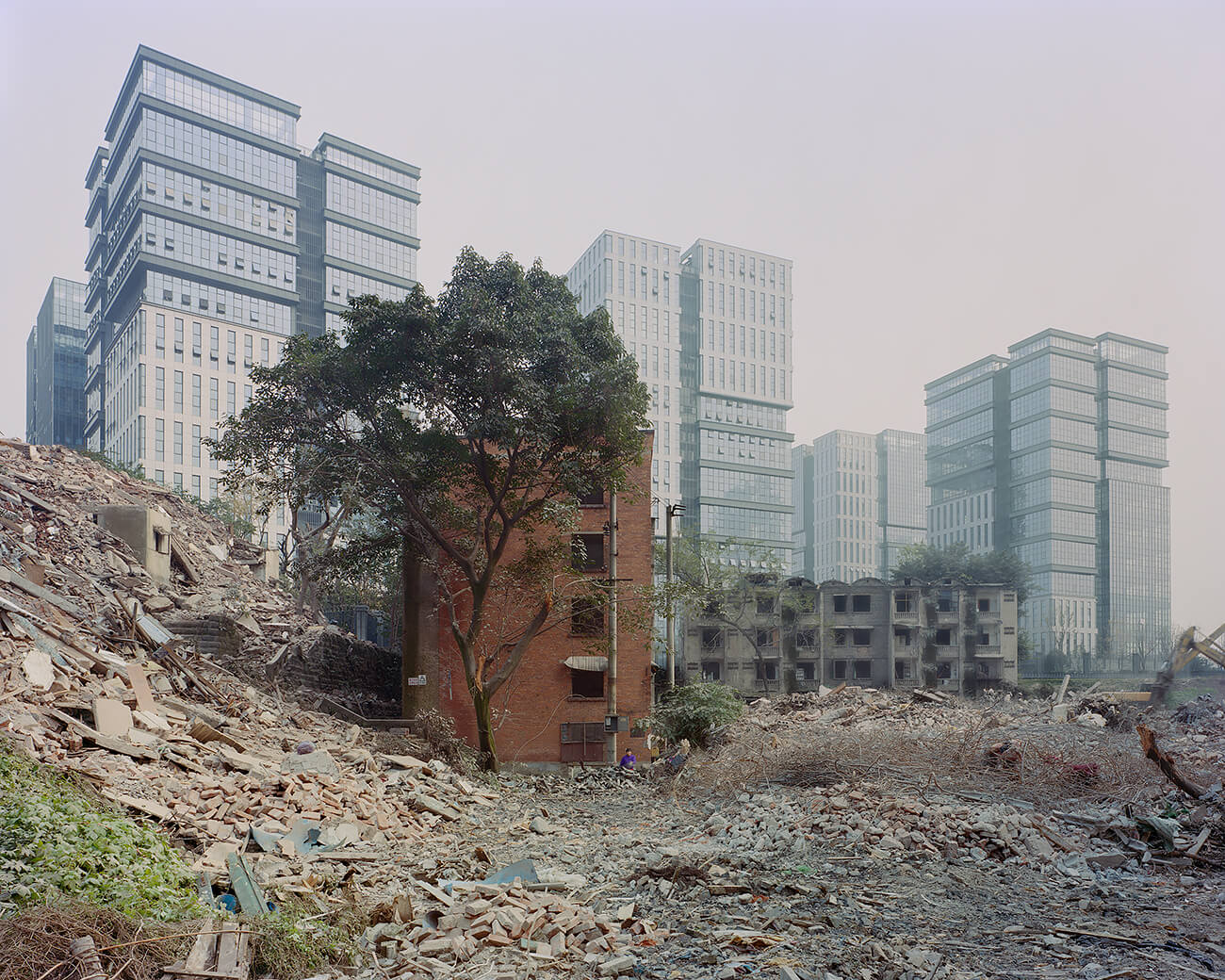
Chongqing 2017 © Cyrus Cornut
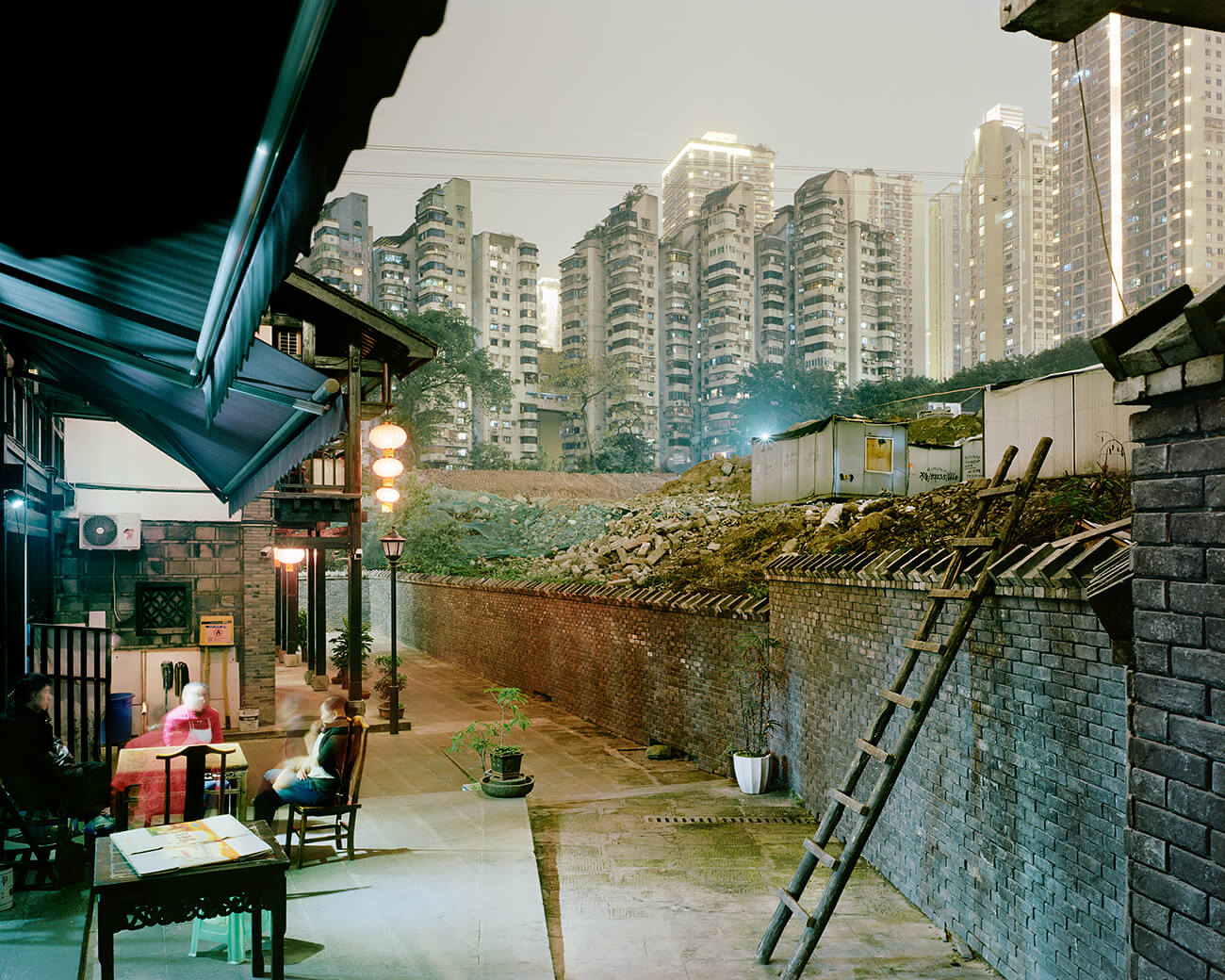
Chongqing 2017 © Cyrus Cornut
Cyrus Cornut is 43 years old.
His training as an architect can be felt in the subjects he chooses to document.
Ravenous urbanisation in China, the eclipse of undeveloped land by mega-cities and motorway networks. And their corollaries:
endemic pollution and contempt for rural populations.
I know that each project is the culmination of rigorous research and documentation which enable him to capture the most important and meaningful scenes when he arrives on site. Cyrus Cornut photographs with a view camera, which requires carefully planning. It is slowexposure photography: he has to scout locations and shots in advance to find the best vantage points. A view camera is a heavy piece of equipment that must be positioned on a tripod.
Each shot has to be painstakingly composed by looking through the ground glass in the rear.
Attention to detail is also important when taking light measurements because the film does not leave any room for exposure error. He must also think of the chromatic range: here, the palette of greys and pale greens creates a lovely whole. (For that, the photographer can thank the carbon dioxide haze that floats above the city.) It seems quite likely that the urban landscapes immortalised by the photographer no longer exist today, hence the importance of carrying out such work despite the high cost and commitment demanded.
Sylvie Hugues 2021 Artistic advisor
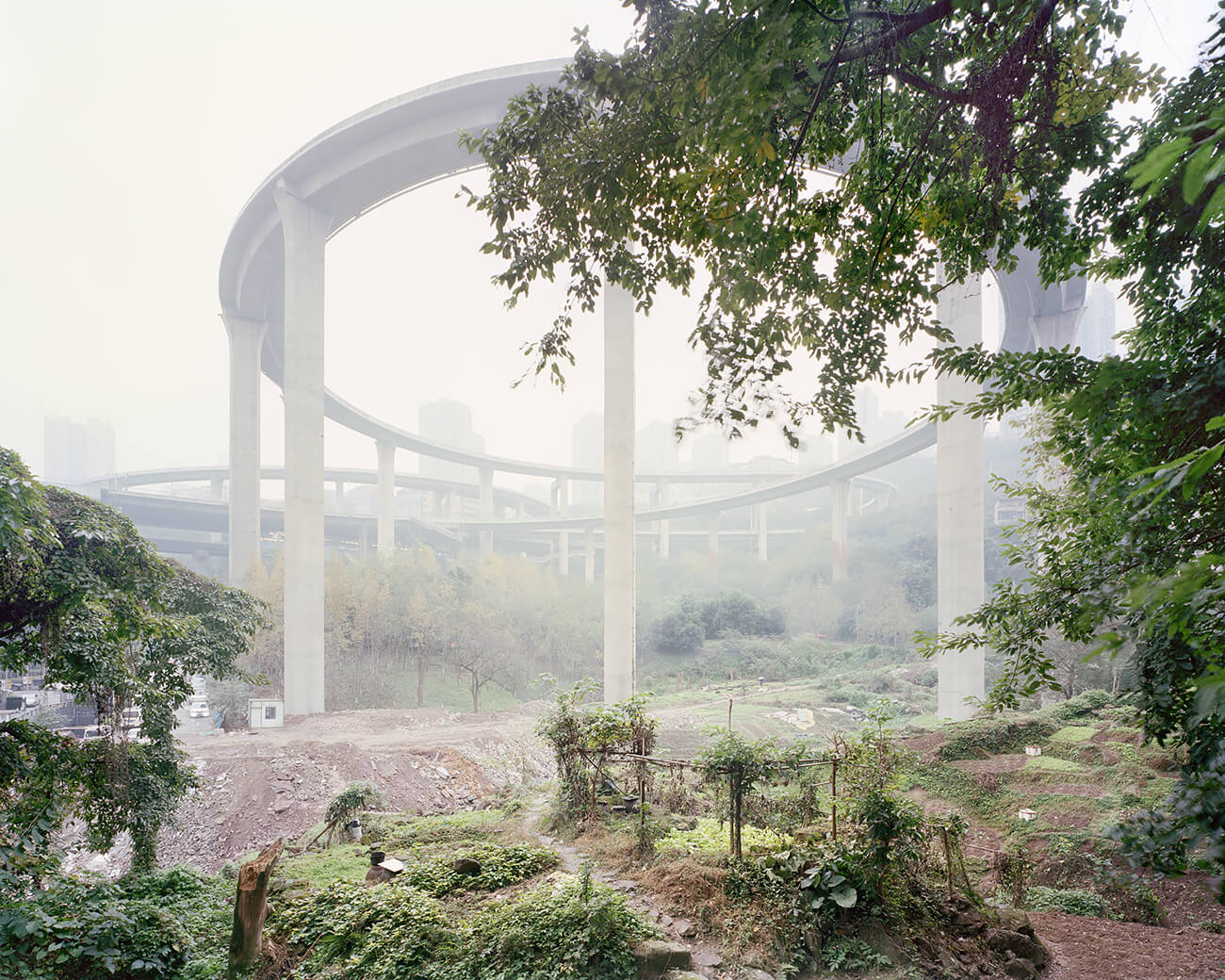
Chongqing 2017 © Cyrus Cornut
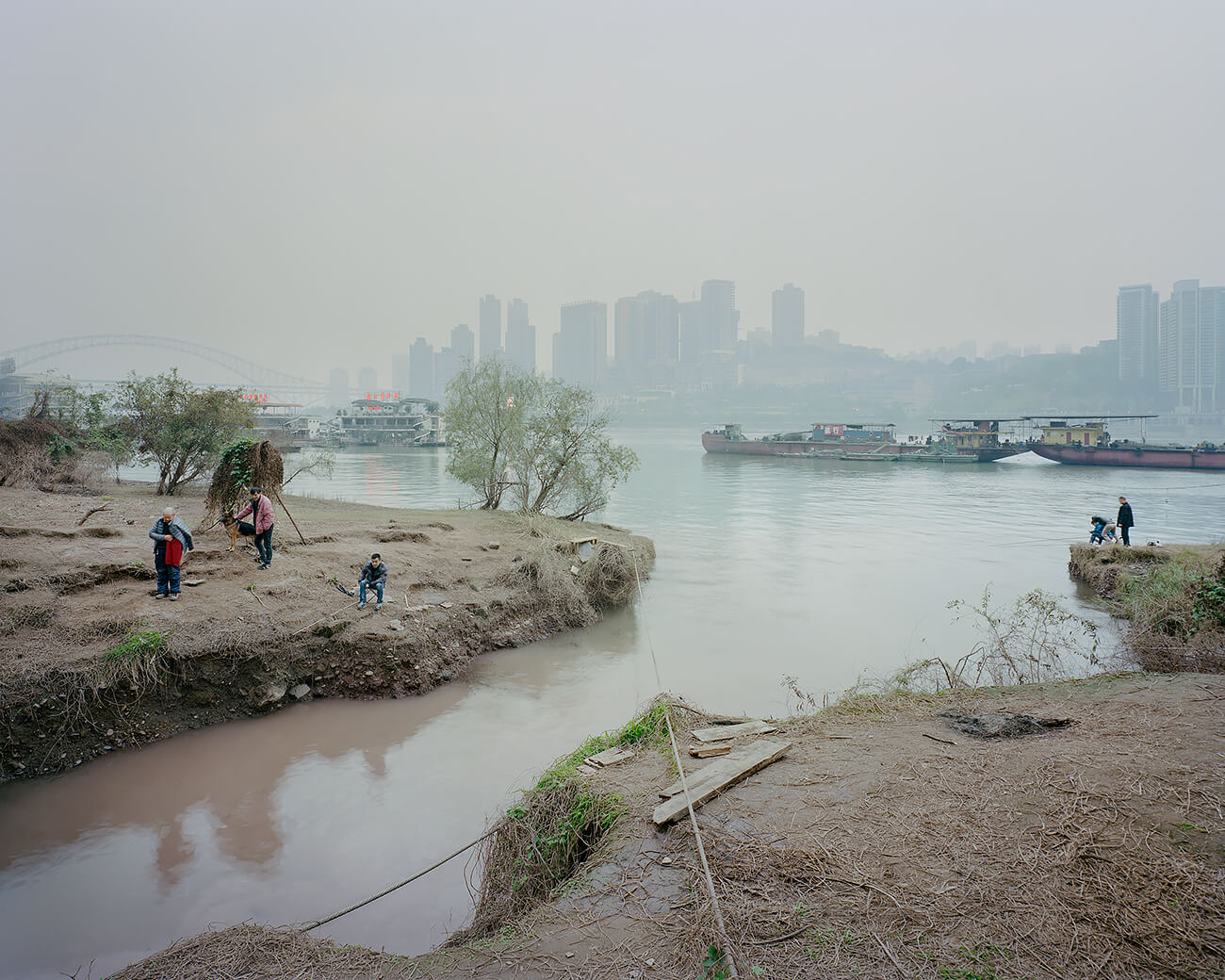
Chongqing 2017 © Cyrus Cornut
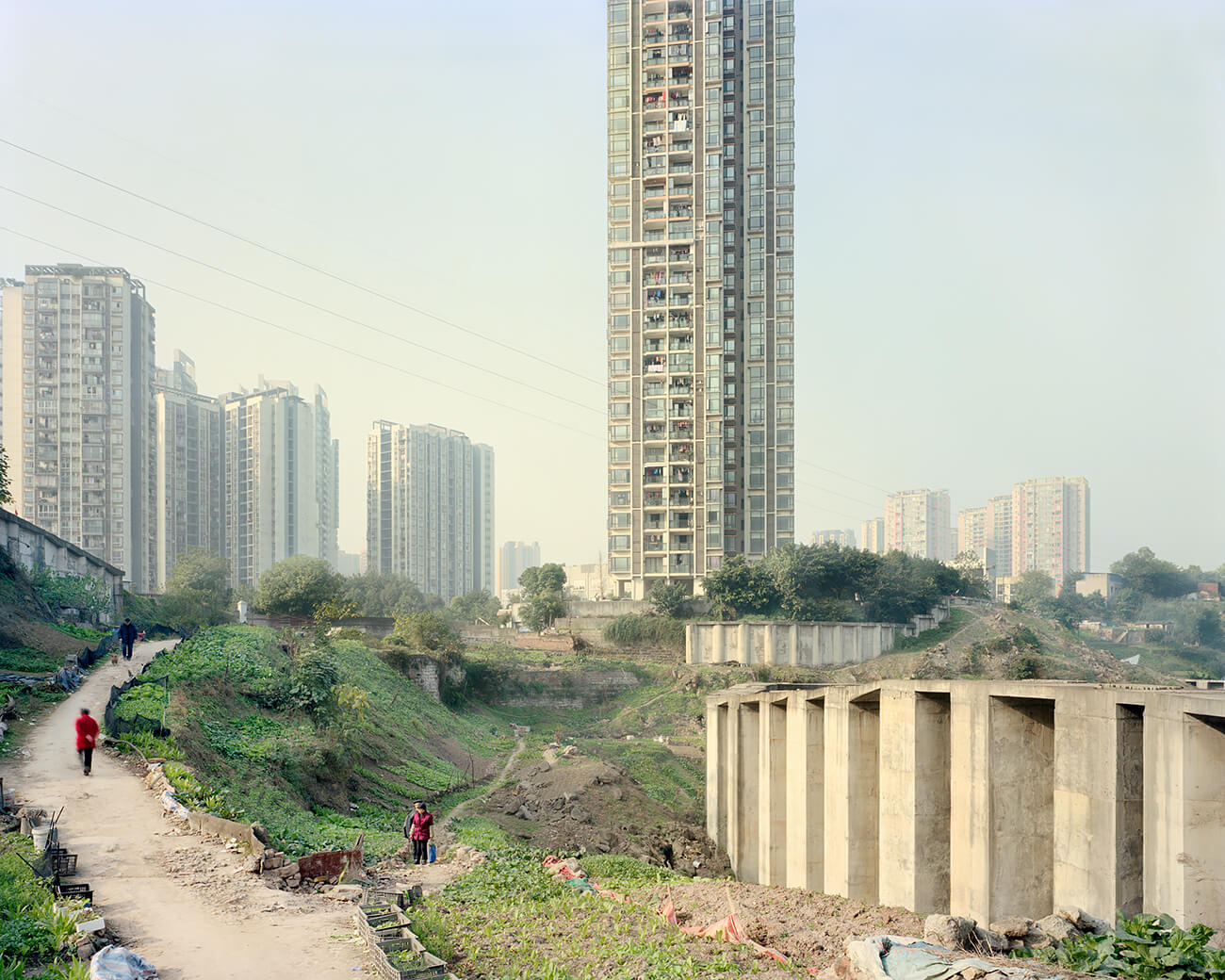
Chongqing 2017 © Cyrus Cornut
I have always viewed the Prix HSBC pour la Photographie as the most thorough and serious of all photography contests. It is a true honour and a great responsibility to have been chosen as adviser to the 26 th edition of the contest. Indeed, poring over the 650 applications submitted to the platform to select 12 rare gems to present to the Executive Committee is an endeavour that is as daunting as it is exciting, both stressful and thrilling.
A sociologist who studies photography could use this representative sample to take the full measure of the wide ranging field of contemporary photography. They would be surprised by the diversity of the subjects explored - architecture, landscapes, portraits, displays of oneself and others, chronicles of modern society - and a handful of portfolios of "applied" photography covering food, sport, performances and macro photography. After nearly two centuries of existence, photography still carries its original ontological ambiguity, a duality that makes it both a highly refined technique and a commonplace practice: a clearly identified profession and an acknowledged art form. In 2021, more than ever, the intermingling of artists, uses, viewpoints and skills, is reflected in the Prix HSBC. The variety of styles poses a real challenge for those who must ultimately award the prizes and choose from fundamentally different series of images. Alongside the parade of virtual reality, synthesized 3D images and larger-than-life holograms, we are witness to the extraordinary persistence of black and white and the resurgence of antique processes. Yet, there is no nostalgia this re-appropriation: technologies collide and each photographer dives into the vast spectrum of the medium to find the tool that is best suited to conveying their ideas, their intentions or, quite simply, their quest for beauty.
Coraline de Chiara, a young visual artist, practices photography without a camera, taking her cues from Man Ray and Moholy Nagy to revive the magic of photograms with simple objects positioned on photo-sensitive paper, which she manipulates to create unique objects. From the other side of the Mediterranean,
Aassmaa Akhannouch takes us back to the time of her childhood with cyanotype prints which she then subtly tones and paints with watercolour, performing all the work by hand. At first glance, the work of the youngest finalists,
Hubert Crabières and
Camille Brasselet, seems quite far removed (but is it really?). They both bring a new, fresh viewpoint, devoid of any complex. He builds caustic set pieces, while she uses digital effects to depict a sleek, smooth world. These notions of matter are recurrent (especially as regards photo film, its grain and its organic aspect) in the work submitted by
Antoine Lecharny and
David Siodos. Antoine produces daringly carnal, poetic images while David shows us a more brittle, brutal vision of the world. Would we call it violence or, rather, anger? The same question crops up when contemplating the magnetic images of
Céline Croze, who should be applauded for her audacity and courage in getting to know gang members in Venezuela. Further south, in Brazil, the residents of Atafona are not victims of drug cartels, but of climate disruptions that are speeding up the erosion of the coastline. With economy of means and impressive mastery of the language of photography,
Felipe Fittipaldi reveals the magnitude of the disaster. Another big country and other big problems: China is where
Cyrus Cornut deploys his view camera. His compositions reflect increasing urbanisation and its corollaries – deforestation and insidious pollution – with disturbing beauty.
Nicolas Rivals also investigates the land and its scars with installations worthy of the Land Art movement. These finalists also include examinations of intimacy. Bulgarian
Vladimir Vasilev welcomes us into the day-to-day of "Miss Parkinson", his grandmother, in a poignant piece combining photography and drawings. Meanwhile, Denmark's
Cécile Smetana Baudier decided to focus on albino twin girls making their way through the delicate phase of adolescence.
In the end, I settled on my selection in stages. As in photo editing. While it is always easy to eliminate a considerable number of submissions, when it comes down to 50, then 30, then 20 photographers, the stress mounts. What if I overlook a great talent? The Prix HSBC pour la Photographie can change an artist's life by giving them the opportunity to make a name for themselves and truly jump-start their career. Looking back at the winners over the past 25 years, the quality of the photographers is astounding: many of them are now renowned auteurs. To overcome my doubt and second-guessing, I decided to follow my heart and select the work I fell in love with, rather than attempting to choose equal numbers of men and women, foreigners and French applicants or documentary and artistic projects.
One does not engage with art through labels, but through crushes, strong opinions and a kind of sincerity that can never be unanimous.
- Sylvie Hugues
About Sylvie Hugues
French.
Lives and works in Paris.
Sylvie Hugues has been a photography consultant and artistic director of the Festival du Regard since 2016. She carries out portfolio readings at the Maison Européenne de la Photographie, animates a Masterclass with the photographer Flore, gives workshops (Rencontres d'Arles, Venezia Photo...), intervenes in conferences (MEP, Salon de la Photo...), writes for magazines (Le Monde de la Photo, Fisheye) and collaborates with the gallery Camera Obscura. In 1992, she participated in the creation of the magazine Réponses Photo, of which she was the editor-in-chief from 1996 to 2014. As a photographer, she has published two books: "Sur la plage" (Filigranes) and "Fra-For" (Verlhac), and as a journalist, she co-authored "Conceiving a portfolio" (Eyrolles) and "La photo numérique en dix leçons" (Minerva)
Sylvie Hugues' Website
Sylvie Hugues on Instagram
About the Prix HSBC
For 26 years, the
Prix HSBC pour la Photographie has been supporting to help and sustainably promote the emerging generation of photography.
An annual competition is open from September to November to any professional photographer who has never had a monograph published, without age limit or nationality criteria.
Each year an Artistic advisor is nominated to give a fresh outlook and to preselect around ten candidates who are then presented to the Executive Committee who selects the two award winners.
The HSBC Prize supports the two photographers by:
- Publication of each artist's first monograph at the Atelier EXB;
- Creation and organization of the travelling exhibition of their works at cultural venues;
- Help in promoting new works in 2021;
- Acquisition by HSBC in France of six works by laureate for its photographic collection.
